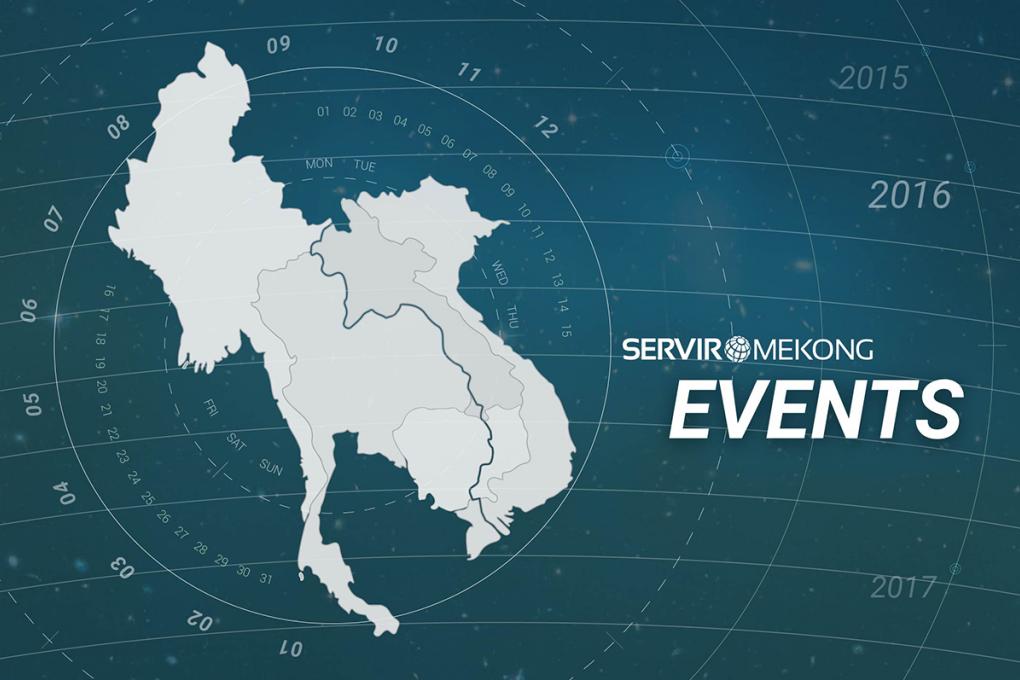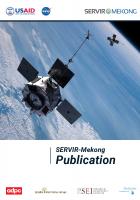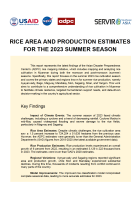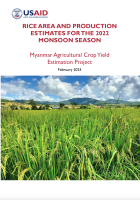Using Satellite Imagery to Monitor Water Quality & Sedimentation
The SERVIR-Mekong program is hosting a research seminar on sedimentation in the Mekong River. The featured speakers are visiting scientists from the U.S. National Aeronautics and Space Administration and Khon Kaen University in Thailand. The objective of the seminar is to promote an exchange of ideas among researchers and water resource managers who are concerned with measuring and controlling sedimentation.

Presentations
9:00 Registration
9:15 Introductions
9:30 Dr. Sonia C. Gallegos, Oceanographer, Naval Research Laboratory; Mekong TSS Algorithms and the concept of an Optical Module for ADCP
- Historically total suspended sediment (TSS) algorithms for sensors of the Landsat-n series have relied on statistical relationships between the Radiance (Lt) or reflectance (Rt) at the top of the atmosphere and in situ concentrations. This is a useful practice for land algorithms, but it can introduce large errors when applied to water targets. Remote acquisitions over water require the removal of multiple scattering atmospheric processes, the single scattering contributions from the water, and the absorption at different wavelengths of atmospheric and in-water constituents. The atmospheric processes can contribute as much as 90% of the total radiance received at the satellite sensor over water targets. We will present the concept of the optical module as an integral part of any total suspended sediment algorithm developed or to be developed for the Mekong River. The module consists of three parts: (1) the atmospheric correction algorithm (L2gen), (2) computer code to assimilate the normalized water leaving radiance nLw, and (3) an algorithm hosting code that allows the computation or multiple TSS algorithms (including the one under development). We will also discuss the current efforts to calibrate the Landsat-8 Operational Land Imagery (OLI) in the Mekong waters, and to validate the algorithm for transition.
10:30 Dr. Sarunya Promkotra, Associate Professor, Khon Kaen University; Chemical Speciation related to Hydrodynamics of Lower Mekong River Sediments
- A study of chemical speciation related to hydrodynamics is researched in Lower Mekong River, along Thai-Laos boundary in NE region of Thailand. Geochemical characteristics are found major cations: Ca2+ > Na+ > K+ > Mg2+, major anions: HCO3- > Cl- > SO42-. Its hydrochemical facies is dominantly Ca-HCO3. The sequential extractions have been developed for the partitioning of particulate ions in stream sediments into four fractions: (I) distilled water, (II) ammonium acetate, (III) hydroxylamine hydrochloride and acetic acid, (IV) hot nitric acid. According to (I) and (II) fractions, the Ca, Na, K ions can be considerably extracted from stream sediments. For (III) fraction, the Ca, K ions are substantially obtained. Besides the (IV) fraction, every ion can be extracted by this procedure. Mineral compositions of stream sediments by X-ray diffractometry are identified in three groups such as quartz, clays, and other minerals. Quartz is decreased in floating suspended sediments and kaolinite is highly discovered, compared to oriented-clay sediments. Moreover, the relationships of the dimensionless shear stress and the fall velocity as a function of suspended sediment concentrations (SSC) and flow velocity are directly the same tendency. The transport rate and stream discharge increases linearity. The distribution of stream discharge as a function of SSC appears to be increase. The more stream discharge, the higher the SSC. Stream sediments deposit in the estuary area where obtains the high fall velocity, and drastically calcium and bicarbonate ions. Stream sediments, with the high fall velocity at estuary, absorb ions and seize them down at the delta. For the sequential extraction in (I), the comparison of ions as a function of distance and clay minerals are indicated that these ions can release from leaching process more than surface water occupied. Therefore, the more clay minerals reveal the high SSC.
11:30 Mr. Kel Markert, Graduate Research Assistant, SERVIR; Investigation into the effects of climate variability and land cover change on the hydrologic system of the Lower Mekong Basin
- The Lower Mekong Basin is an economically and ecologically important region that experiences hydrological hazards that can limit economic growth and development and directly affect human livelihood. To effectively plan for how hydrologic hazards might change due to climate variability and with land cover change, more information is needed into how the water budget changes through time and space under such scenarios. This research investigates how climate variability, specifically variations in the precipitation regime, as well as land cover change will affect the hydrologic budget both spatially and temporally within the Lower Mekong Basin with a focus on water availability, i.e. floods and droughts. This goal is achieved by (1) modeling land cover change for a baseline scenario as well as changes in land cover with specific increases for land cover classes and (2) using projected climate variables and modelled land cover as input into the VIC hydrologic model. The resulting modeled water budget and streamflow for the Lower Mekong system are analyzed against historic values to understand if the hydrologic system changes due to climate variability or land cover change, where these changes occur, and to what degree these changes affect the water budget. The results of this study can be used by end-users for planning and decision making. This talk will focus on the development of the hydrologic and land cover change model, preliminary results of the research, and future directions.
12:30 End









